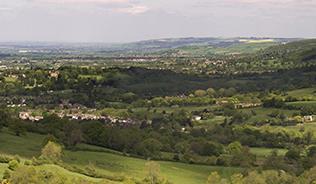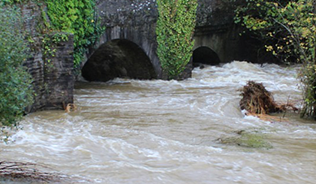As a life-long naturalist with nearly three decades running an ecological consultancy, I find myself reaching boiling point over biodiversity offsetting, and simultaneously becoming sad because our native wildlife desperately needs all the help it can get. Every site’s ecology is particular to its specific location: you may be able to consider compensation for destroying it but it will never truly be “like-for-like” so you can’t “offset” it. Perhaps a better word than offsetting would be "compensation" and with an emphasis that this does not equal "equivalence".
The choice of the word “offset” was unfortunate and sends entirely the wrong signals to landscape planners & developers that they can “buy their way out” of destroying nature and habitats. The multiplicity of environmental factors influencing separated sites means their ecology is never identical. To suggest that you can offset a site in one place with another somewhere else, often a long way away, is just a demonstration that the basic science has not been understood. The obfuscating “metrics” produced by offset proponents just serve to add a false veener to make it look like science.
At first sight, this buy-out facility can be overtly and irresistibly seductive to a developer, or at least their accountants, but it amounts to avoiding ecological responsibilities and will lead to impoverishment/destruction of local biodiversity. That is neither sustainable, nor good for developers or their customers in the long term, especially as there are far better and cheaper solutions.
Nature needs to be designed into developments by way of the excellent protocols (such as Green Infrastructure), not set apart. Such separation suggests people and wildlife don’t mix, which is untrue. Gardens and development-associated greenspace are key habitat reservoirs in our increasingly urban landscape and are extraordinarily rich in wildlife. As Natural England puts it: people need “wildlife on their doorstep”. Divorce them from it and they will forget it, cease to value it and miss out on the stimulus, interest and wellbeing it provides them and their families. Nature needs to be part of human life where it will be treasured and its benefits to society delivered, not remote from it (even by a few hundred metres) where it will be forgotten.
“Habitat banking” is what has been called “marketising” ecological assets. The idea of trading biodiversity is anathema to most of us: one cannot treat habitats and biodiversity like manufactured goods or even carbon, which incidentally has its own problems. To suggest that someone can offset a development’s impact by buying their way out to provide equivalence elsewhere is scientifically nonsensical, even if governments who don’t listen to scientists think they can. This is not because I have any objection to commerce - far from it- but because it dumbs down ecology and shows a simplistic and misinformed approach to a subject that requires sensitive, sophisticated and adept treatment. Given the absence of scientists in local and national government these days, this is not surprising, but that does not make it right.
The elephant in the room is that so much of this has arisen because planning authorities seldom insist on appropriately high ecological standards in new development design, and worse, when they do they don’t enforce Conditions attached to planning consents. I see this again and again. High class Green Infrastructure landscaping, biodiversity design (see e.g. the RIBA publications on the topic) and green space retention with proper management in perpetuity are techniques capable of preserving and enhancing our biodiversity in suburban/semi-rural areas whilst allowing reasonable levels of development. That is where the problem lies and that is where it needs addressing, not through scientifically questionable, politically- or commercially-driven evasion strategies.
There are some last resort situations when a development has to take place, say in the national interest, when an attempt at offsetting is better than nothing. These cases are seriously rare. In the majority of cases, if a development is predicted to have such a profoundly adverse impact on local biodiversity - and cannot be reasonably avoided or mitigated by on-site GI planning - then the project should probably not be allowed to proceed anyway.
I have to conclude that it is hard to see biodiversity offsetting as other than bad science and, more cynically, a gravy train for a few people hoping to make a lot of money. It is a spin-off from the attempt at accounting of ecosystems and ecosystem services, but it is a flawed extrapolation and should be abadonned by planners and those with influence. I think it a great pity that biodiversity offsetting entered the National Planning Policy Framework in the way it did. It has to be hoped that those in power will inject some common sense and science into the subject as attempts to solve the conundrum of human population versus available land resources.
Christopher Betts holds a first class honours degree in ecology, land-use and biology and a doctorate in phytosociology. He is a Chartered Biologist, Fellow of the British Naturalists’ Association and a Member of the IES. Dr Betts has a particular focus on legally protected species and on wildlife legislation as it affects land-use, industry, planning and commerce and has served as a member of the Natural History Museum's Identification Qualification (IdQ) Advisory Board. He is Chairman of Betts Ecology professional consultancy and Honorary Editor of the Worcestershire Naturalists’ Club’s Transactions. Opinions expressed in blogs are the author's own and not those of the IES.





